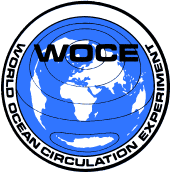 |
 |
 |
 |
Deep Circulation of the South Atlantic: Inversions with Hydrographic, Tracer and Direct Velocity Measurements
Michal
Vanicek
Woods Hole Oceanographic Institution
Woods Hole, Massachusetts, USA
mvanicek@whoi.edu
Nelson
G. Hogg
Woods Hole Oceanographic Institution
Woods Hole, Massachusetts, USA
nhogg@whoi.edu
Abstract
In an effort to answer open questions with respect to transport patterns and transport rates of the deep water masses in the South Atlantic, we present here the results of continued work on an improved linear box-inverse model. For the inversions the hydrographic, nutrient, and tracer data from all available WOCE sections of the South Atlantic were combined with the direct velocity measurements as determined from the float program of the WOCE Deep Basin Experiment as well as with flow conditions inferred from moored current observations. The tracer concentrations, as well as the calculated tracer fluxes, were used to identify the water masses transported in the deep circulation regimes apparent in the results of the inverse model. Additional emphasis is on the determination of the regions with enhanced or weaker water mass modification (diapycnal and lateral mixing). The comparison of the mean circulation obtained from the inverse model with direct measurements supplies information on the temporal variability of the deep ocean and on the representativeness of the float observations and hydrographic sections with respect to mean fields.